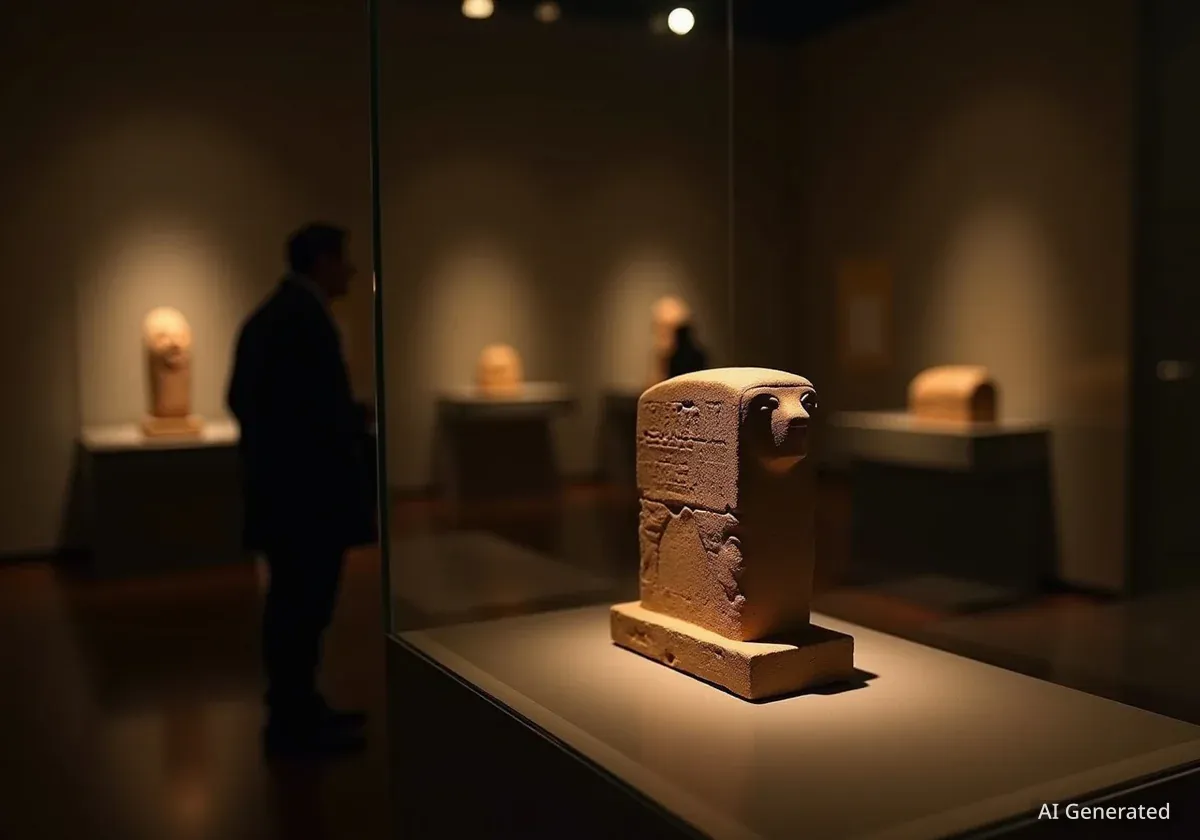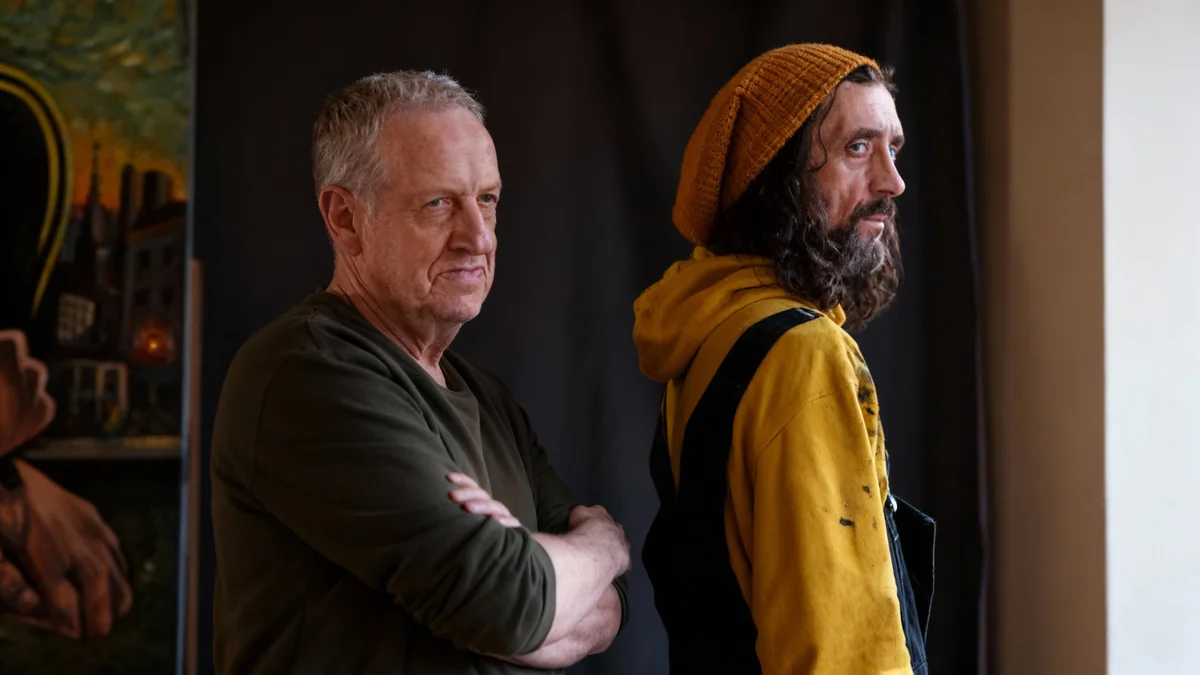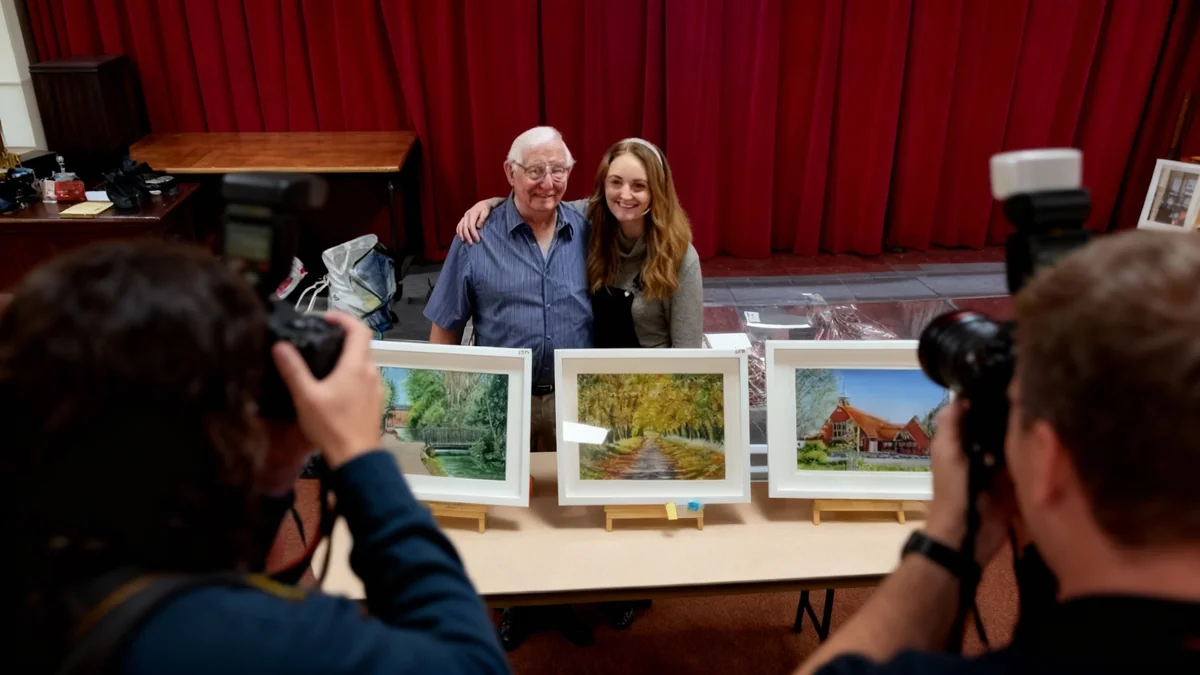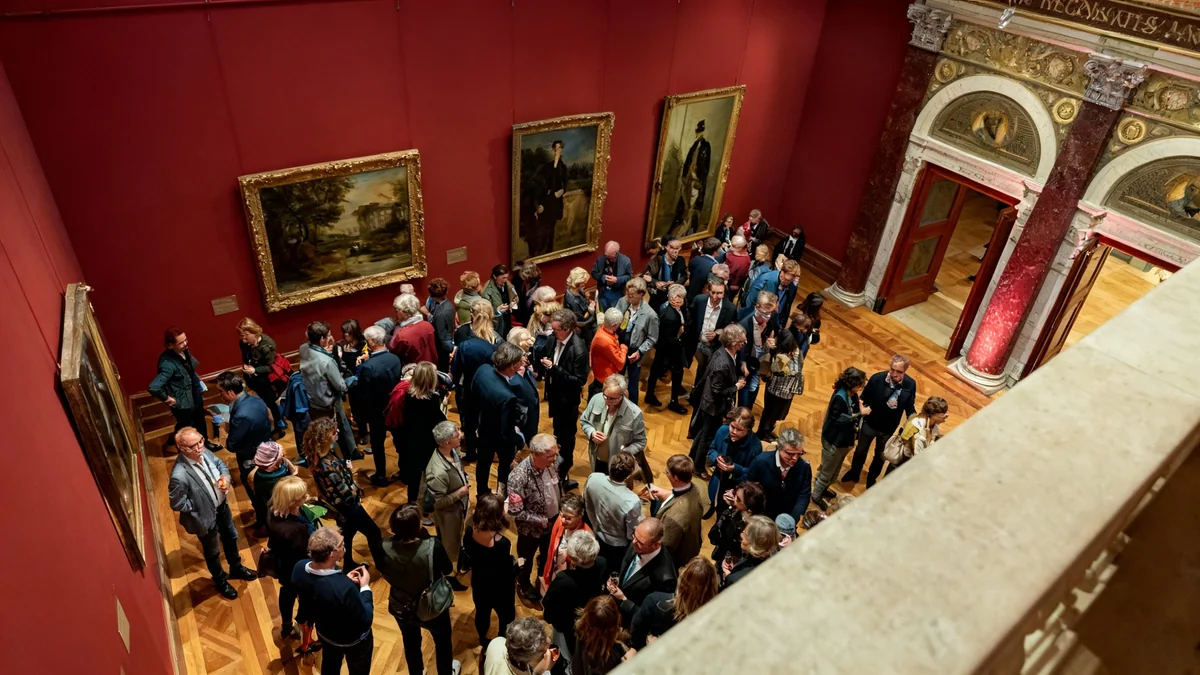The Metropolitan Museum of Art in New York is set to open a new exhibition, "Divine Egypt," on October 12. This unique presentation explores the diverse and often mysterious deities of ancient Egypt through more than 200 artifacts. The exhibition highlights how ancient Egyptians depicted their gods in forms that can appear unusual to modern viewers, ranging from animal-human hybrids to abstract representations.
Many of the objects on display are thousands of years old, providing a fresh perspective on the artistic and religious practices of one of the world's oldest civilizations. The show aims to reveal the complexity and fluidity of ancient Egyptian religious beliefs, showcasing how gods were perceived and represented across different eras and regions.
Key Takeaways
- "Divine Egypt" opens at the Metropolitan Museum of Art on October 12.
- The exhibition features over 200 ancient Egyptian artifacts, including 140 from the Met's collection.
- It explores the diverse and often unusual depictions of 25 ancient Egyptian gods.
- Curators emphasize the 'unknowability' and shapeshifting nature of these deities.
- Many objects are small, personal amulets, reflecting the gods' presence in daily life.
Unusual Depictions of Ancient Egyptian Gods
The exhibition features several artifacts that challenge modern expectations of ancient Egyptian art. For example, a limestone block carved with four ears, stacked in pairs, is among the items. Another notable piece is a statue of a snake with a woman's head, replacing the typical reptilian face. These objects suggest a rich artistic tradition that embraced complex and sometimes surreal imagery.
A small figurine resembling a horse with bony paws instead of hooves also stands out. Another sculpture shows a tall falcon protecting a man. A bronze piece depicts a hybrid creature combining features of a cobra, an eel, and a human. These examples highlight the creative ways ancient Egyptians imagined their divine beings.
Exhibition Fact
The show's most striking piece might be a large quartz diorite block shaped into a scarab beetle. This beetle represents Khepri, the god linked with the morning sun. Its smooth back contrasts with its fearsome mandibles, creating a powerful and somewhat alien image.
Exploring the Unknowable Nature of Deities
While some artifacts, like cat-shaped coffins or pharaoh sculptures, may seem more familiar, "Divine Egypt" contains many pieces that are difficult to fully explain today. This is partly due to lost historical records. Modern curators continue to research and fill in gaps in our understanding of ancient Egypt's past.
However, the exhibition also suggests that a degree of unknowability was inherent in this art. This quality may have helped make these deities appear distinct from humans, emphasizing their divine nature. The show covers the numerous gods worshipped across different dynasties of this ancient civilization.
Former Met director Thomas Hoving once speculated on the appeal of ancient Egyptian art. When asked why over a million people visited the museum's 1978 King Tut exhibition, Hoving suggested that "the majesty and mystery of the ancient past" drew visitors in.
Historical Context
The King Tut exhibition in 1978 was a major success, setting a benchmark for Egyptian art shows. "Divine Egypt" is the first large-scale Egyptian art exhibition at the Met since 2012. It is a more modest presentation in scale compared to the Tut show, but it is still substantial.
A Focused Look at 25 Gods
The exhibition includes about 210 priceless pieces. Around 140 of these come from the Met's own extensive Egyptian art collection. Notably, none of the other pieces are on loan from Egypt itself. The show is housed in one of the Met's largest special exhibition spaces, but many of the objects are not monumental in size.
Many displayed items are exquisitely crafted amulets and figurines, small enough to be held in one's hand, though they are kept safely behind glass. Curator Diana Craig Patch, working with research associate Brendan Hainline, has organized an exhibition that, despite its quiet presentation, offers a clear purpose.
The show examines the approximately 1,500 gods worshipped in ancient Egypt. However, Patch wisely focuses on about 25 key deities. These are presented in engaging mini-sections that do not follow a strict chronological order. This approach demonstrates how the gods' imagery and roles were adapted and combined depending on the time and location within ancient Egypt.
Shifting Iconographies and Divine Fusions
The exhibition begins with artifacts that were likely accessible only to pharaohs. This section illustrates how specific iconographies defined Egypt's gods. For instance, Horus, the god of the sky, was often depicted with falcon-like features. One limestone statue shows him seated, with an arm behind King Haremhab, suggesting a close relationship.
Another striking metagraywacke sculpture shows a tiny King Nectanebo II standing between the splayed talons of Horus. For other gods, their representations were less consistent. In the section dedicated to Hathor, the goddess of motherhood, dance, and joy, her image varies significantly.
- A column fragment from the 4th century BCE shows Hathor with a human face and cow's ears.
- A statue from the 15th century BCE depicts her as fully bovine, with almond-shaped eyes made from rock crystal.
- A tiny pendant from between the 12th and 7th centuries BCE transforms Hathor into Bat, a different cow goddess with a triangular forehead and golden eyes.
These variations highlight that for ancient Egyptians, gods were often seen as shapeshifters. This concept is evident in a blue-glazed faience amulet from between the 7th and 1st centuries BCE, showing a falcon-headed crocodile. The falcon head likely refers to Horus, while the long, scaly back points to Sobek, the god of the Nile. This could even specifically reference Soknopaios, a version of Sobek worshipped in the Fayum region.
Gods in Everyday Life
As the images of gods moved beyond temples reserved for pharaohs and became accessible to the public through shrines and processions, their forms continued to evolve. Their images inspired everyday objects, such as a board game surface based on the coiled body of the serpentine god Mehen.
The goddess Bastet, with her feline attributes, influenced various cat-themed artifacts, including a mummified cat. This mummified cat evokes the mystery that Thomas Hoving spoke of in 1978. However, it does not possess the same majesty as monumental works.
One of the exhibition's strengths is its ability to demonstrate that the enigmatic presence of the gods was compatible with daily life. These deities were not only honored in grand temples and heavy sarcophagi but also in smaller, portable objects. These items asserted their unique and sometimes strange nature on a more personal scale.
Visitors are encouraged to spend time with the exhibition's smallest artifacts. A notable example is a Hathor pendant from the 8th century BCE, during the rule of Nubian kings in Egypt. The goddess's head is crafted from rich gold leaf on a carefully cut rock crystal. Its owner, a queen of Piye, believed this crystal once held something important, perhaps a "magical substance" or a prayer wrapped in gold, as suggested by the curators.
Today, only a brown residue remains inside the crystal. Even after two millennia, the amulet retains riddles that remain unsolved, underscoring the enduring mystery of ancient Egyptian beliefs.




